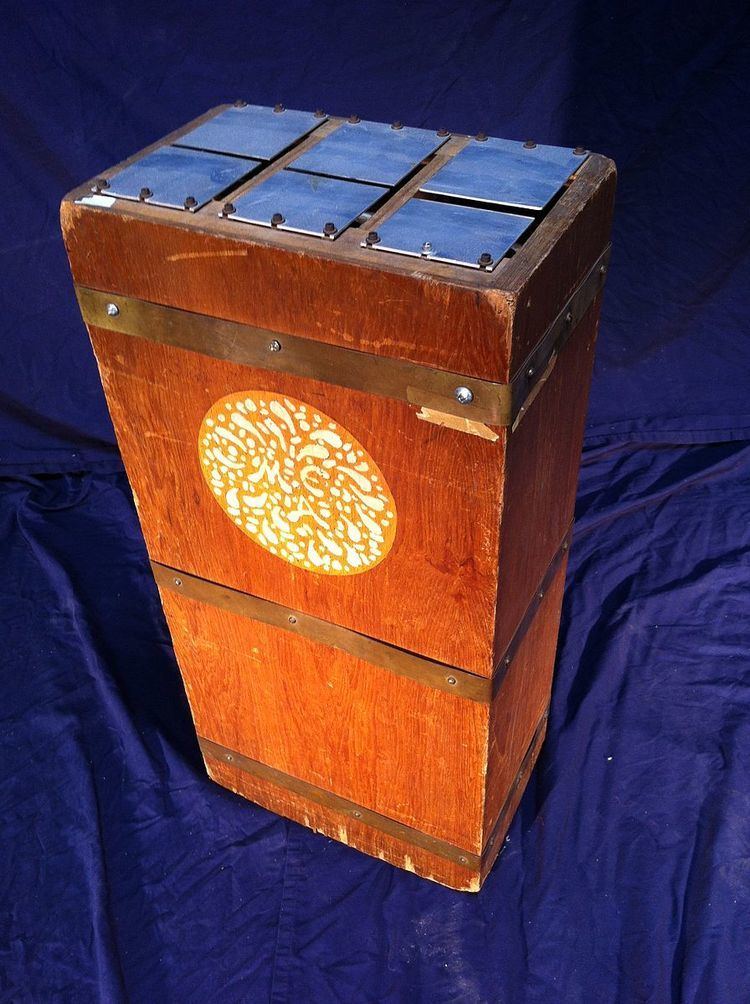Other names Loo-jonMetal log drum Developed Middle 20th century | Inventor(s) William Loughborough Volume Low | |
 | ||
Hornbostel–Sachs classification 111.222(Directly struck idiophone) | ||
The lujon ( /ˈluːdʒɒn/ LOO-jon) is a bass metallophone consisting of individually-pitched metal plates that are attached to the resonance chambers of a partitioned wooden box.
Contents
History
The lujon was invented by William Loughborough. At his Sausalito, California studio, Loughborough created a variety of new percussion instruments, including the boobam and lujon, after working with Harry Partch in the mid-1950s.
The lujon is played with soft mallets, and produces a sound that is dominated by its fundamental frequency. The instrument is also known as a loo-jon or metal log drum. In a 2009 Web post, Loughborough provided the following historical background: "Henry Mancini's drummer, Shelly Manne had several drums I made and one of them was the Lujon (a pun on 'John Lewis' who bought the first one). Mancini was very impressed with the instrument and wrote ['Lujon'] using its scale as the theme."
On 7 April 2010, Loughborough died of a heart attack in Madrid, Spain at the age of 84.
Composers
Composers who wrote for lujon include Jerry Goldsmith, Gerald Fried, Dave Grusin, and John Williams. Henry Mancini used it in his score for Hatari!, and also featured the instrument in a composition called "Lujon."
